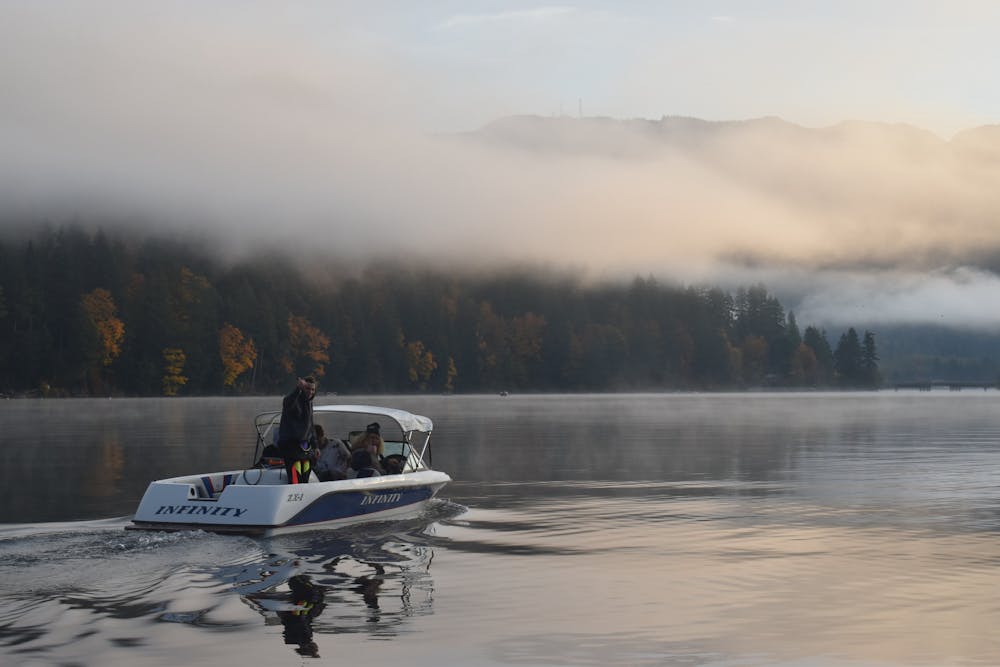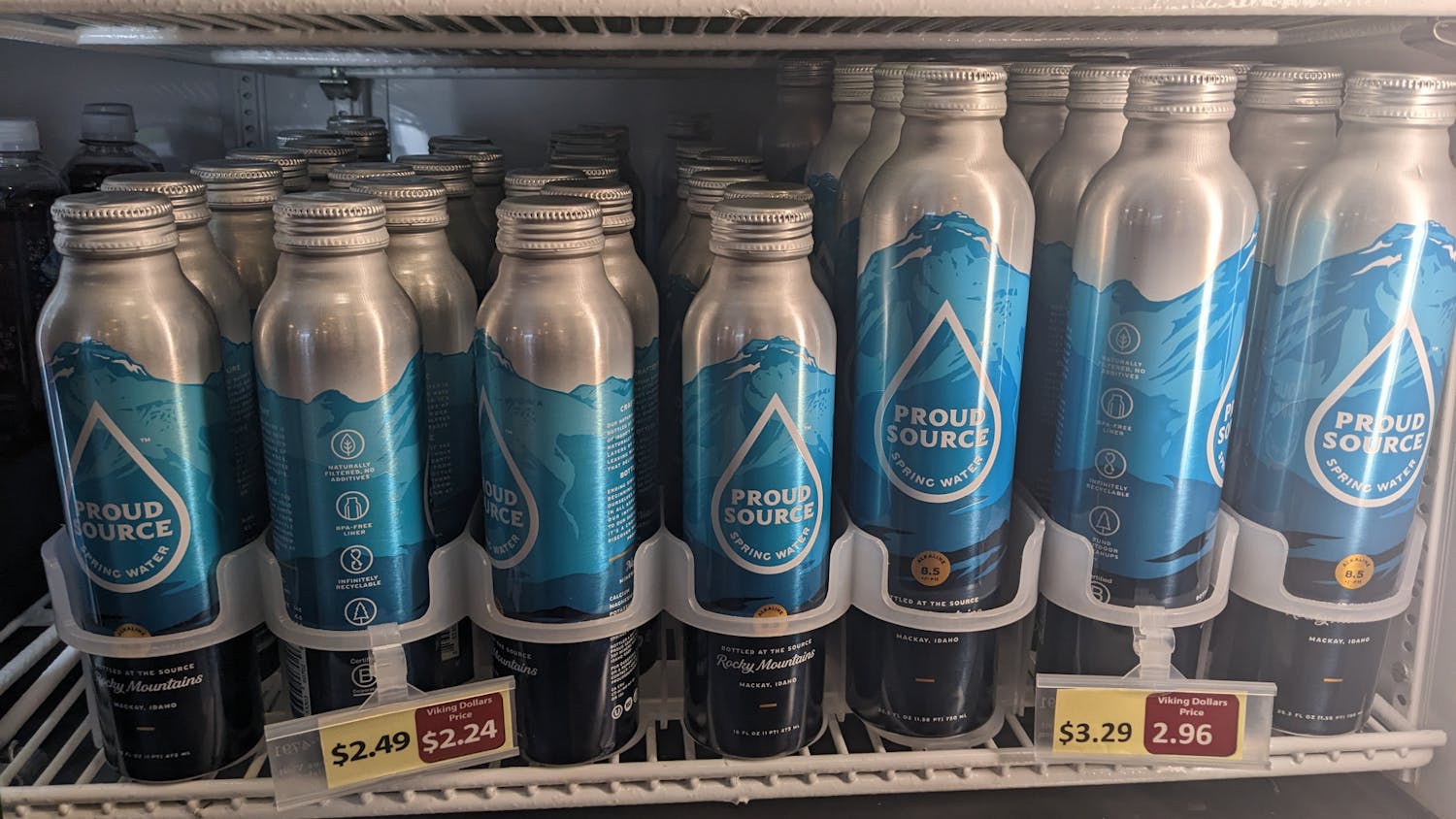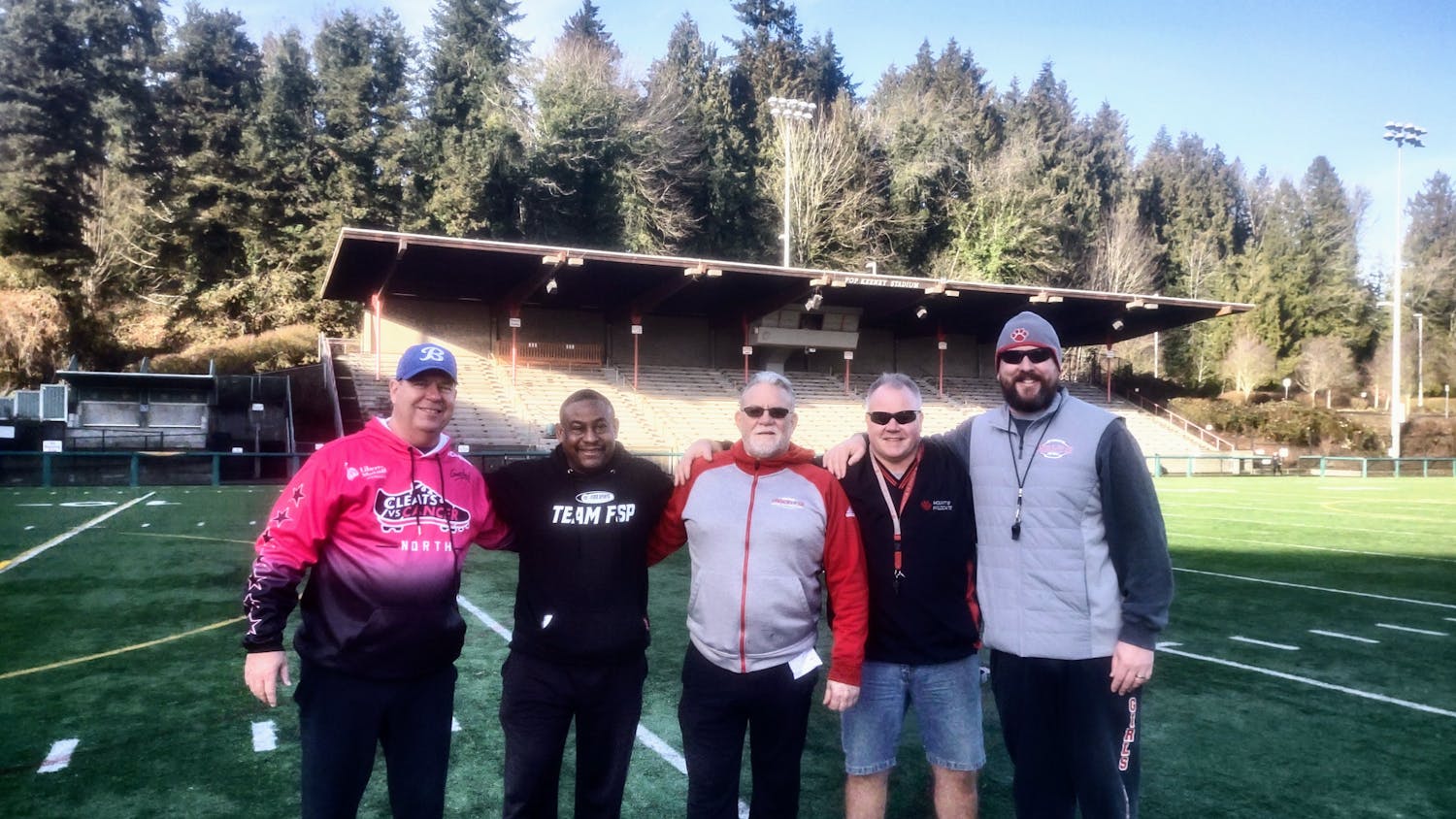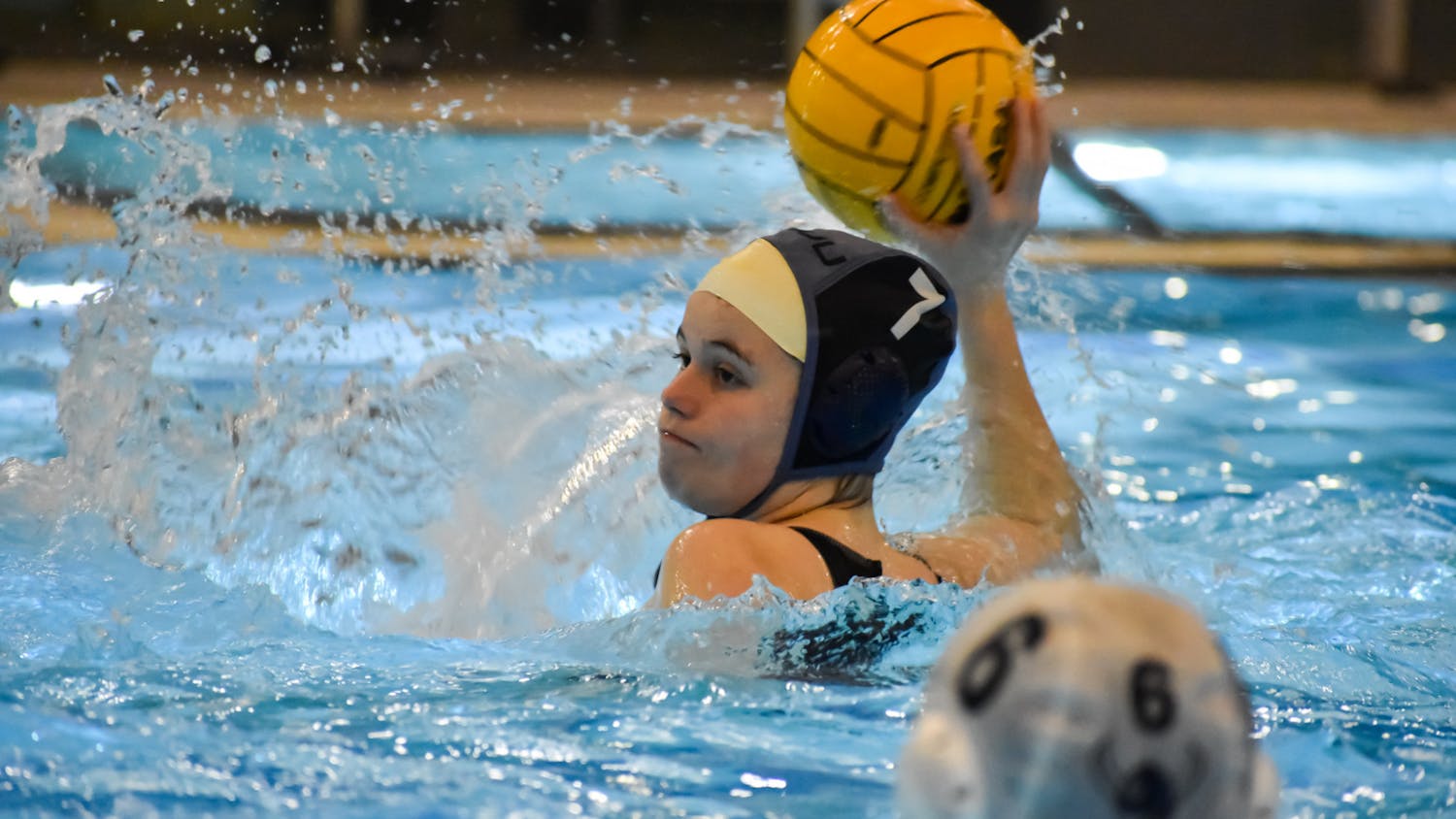Seven days a week, Western Washington University’s water ski team is on the water from sunrise to sunset.
“We’ll be on the water at 7 a.m. It's like 50 degrees outside, cold and raining, but we still love it,” said team member Alana Sullivan. “We go crazy for it. It's a polar plunge every single day.”
The water ski season runs all year, except for winter quarter, when many members go to Mount Baker to ski instead.
“I love the stoke,” said team President Meg Silta.
When most prefer to stay cozy in bed, Western’s water skiers seek out something a bit more adventurous.
“Waking up first thing in the morning and being in the cold water feels really, really nice.” said team member Christine Grant.
Despite being a student-led team recovering from the COVID-19 pandemic, the group has regained success. The water ski team had two members at the start of the 2021 school year. A year later, the team had 35 members and qualified for nationals.
“Almost 100% of our team is brand new,” Silta said.
Many incoming members had no experience, but found that they could run the water ski course within a year.
Western has full teams of both women and men who are landing water ski jumps.
“If you can get five people to form an A-team landing jumps, you’re ahead of the pack,” said Co-Vice President Anders Larson.
In the water ski world, a jump is when the boat leads the water skier straight toward a ramp. The ramp launches the skier into the air, where they can travel anywhere from 30 to 200 feet.
Hitting the ramp feels like barreling against a brick wall, said water ski team member Kyle Huard. A water ski jump requires immense skill; it can take months of practice before a water skier is able to land a jump.
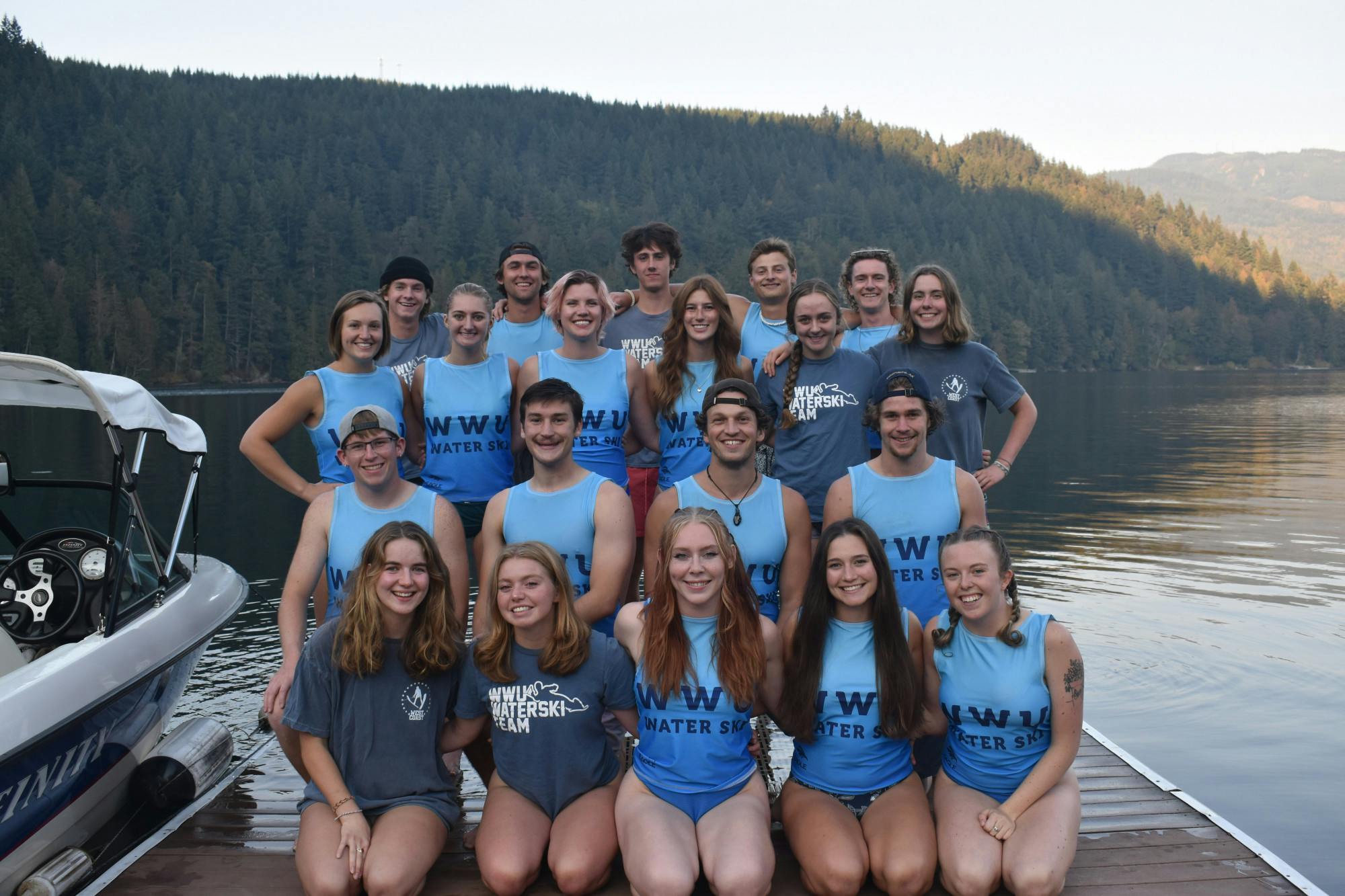
The water ski team is completely student-run. Even though work is split between leadership roles, managing a team can be compared to a part-time job.
“It's taught me a lot, but it's a lot of hard work,” said Larson.
WWU’s Assistant Director of Sport Clubs and Intramurals Caitlin Sommers explained that the team manages large budgets.
The clubs get some funding to help subsidize the cost of participating, but most of the team’s budget comes from student dues, alumni donations and team fundraising.
“That financial responsibility is pretty high,” Sommers said.
Western’s team is the only college level water ski team in the Pacific Northwest. Other water ski teams are located in California and Arizona, so members are no strangers to travel.
Larson recalled his favorite memory from being a part of the team: his first tournament.
“We only had four people, and we went in this tiny little Honda Civic with a crap-ton of ski gear in it, and were just stuffed in there,” he said.
It took the group 15 hours to drive to Sacramento.
“The greatest thing about tournaments is making connections with people all the way up and down the West Coast,” Larson said. “There's so few people that are into water skiing at the level we are, so it's like we really are our own family.”
Co-Vice President Kyler Grunert said water skiing makes any day better, even if he didn’t ski as well as he’d like to.
“Even though it's an individual sport, we are such a family,” Silta said. “We are so close, and we are so excited for each other's success, and we are so supportive of each other that it just makes it feel like such a tight team bond.”
Sullivan said that even though every water skier is at a different skill level, the community is a competitive yet encouraging environment.
“We’re all just a tight-knit, fun group,” Sullivan said. “That’s what makes the team so successful.”
Malia Fraser (she/her) is a sports reporter for The Front. She is studying journalism and environmental studies. In her free time, she loves to run and take care of her many plants. You can reach her at maliafraser.thefront@gmail.com.


